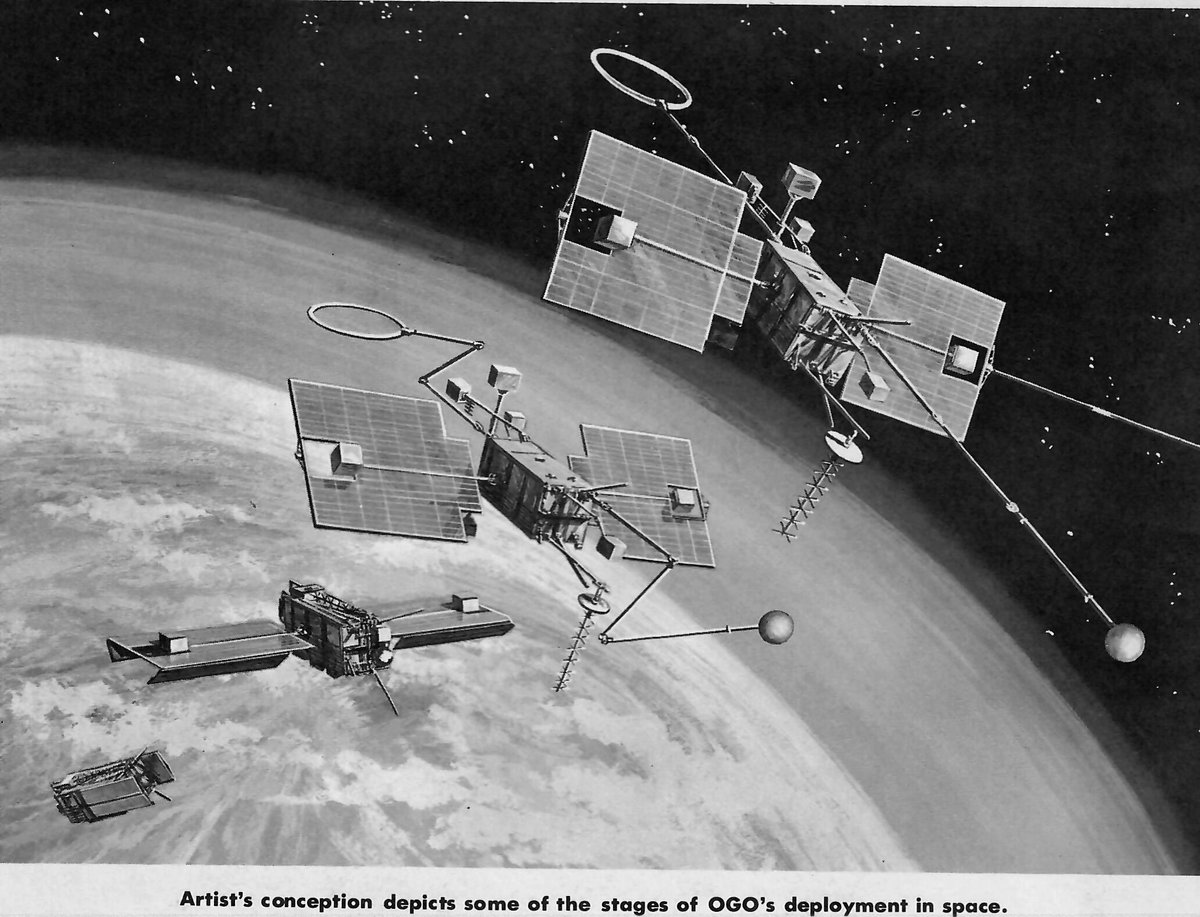From NASA FACTS Vol II No. 13, some nice diagrams of OGO 1. First, OGO 1 in the Atlas Agena nose fairing 

Six OGO satellites were launched from 1964 to 1969; three EGO (Eccentric Geophysical Observatory) in highly elliptical orbits and three POGO (Polar Orbiting Geophysical Observatory).
The satellites were known as OGO A to F before launch, and OGO I to VI after launch. They also had 'S' satellite codes in the systemused by GSFC starting in 1959:
S-49 OGO-A OGO I (EGO)
S-50 OGO-C OGO II (POGO)
S-49A OGO-B OGO III (EGO)
S-50A OGO-D OGO IV (POGO)
S-59 OGO-E OGO V (EGO)
S-60 OGO-F OGO VI (POGO)
S-50 OGO-C OGO II (POGO)
S-49A OGO-B OGO III (EGO)
S-50A OGO-D OGO IV (POGO)
S-59 OGO-E OGO V (EGO)
S-60 OGO-F OGO VI (POGO)
OGO 1 is the last of the OGO payloads to remain in orbit. The rocket stages have also reentered, except perhaps for OGO 1's Agena rocket, Agena 6501 - it was never tracked after launch so has been lost since 1964.
• • •
Missing some Tweet in this thread? You can try to
force a refresh









